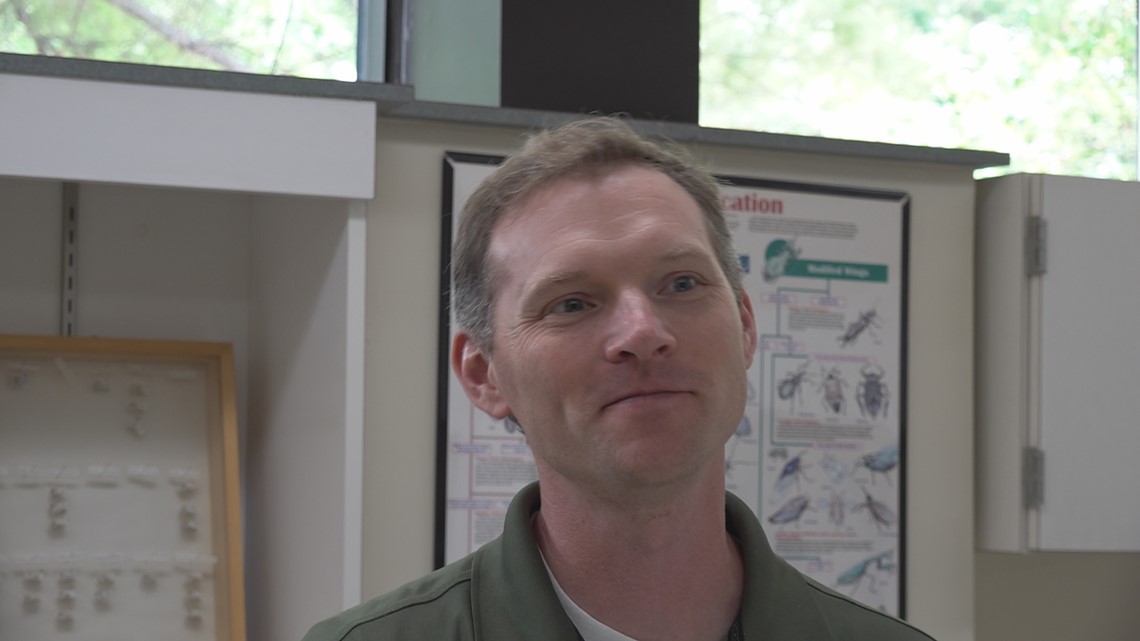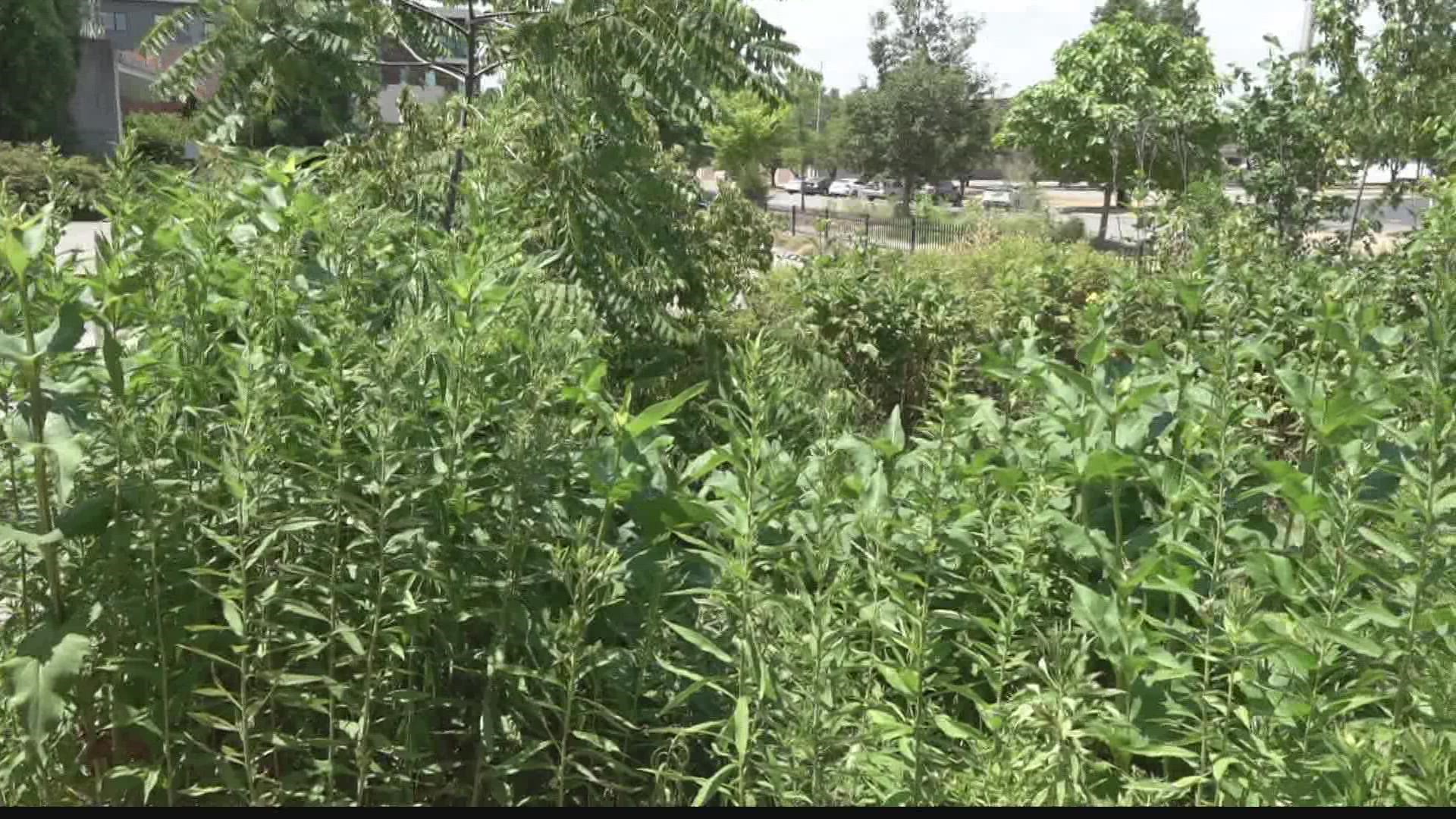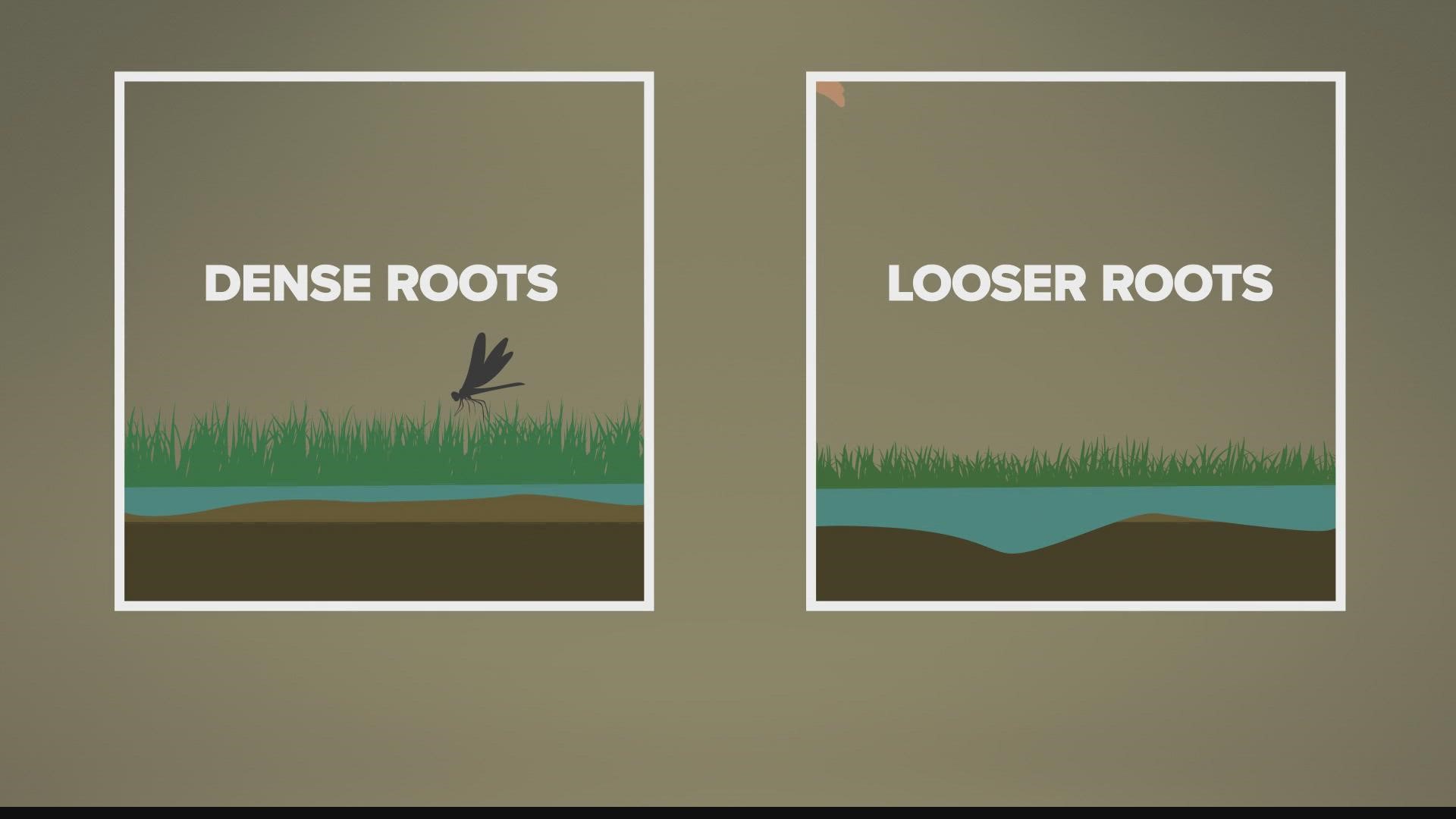INDIANAPOLIS — Summer means mosquitoes in Indiana.
Our very dry weather has kept their numbers down recently, but that can change quickly. All it takes is some water and a few days, and you could be facing hundreds of mosquitoes.
Not only are they annoying, they can spread dangerous diseases.
The key to fighting mosquitoes is getting rid of standing water. Mosquitoes need it to reproduce. Some mosquitoes lay their eggs directly on the water. Others will lay their eggs where water will be when an area floods. The eggs wait until they are flooded and then they hatch.
“That’s how a majority of mosquitoes overwinter in Indiana, when it’s cold,” said Marion County mosquito control coordinator Matt Sinsko. “It’s ingrained knowledge. They know where water will be.”
Sinsko also said it’s impossible to spot the eggs because they are so small. But while the eggs can handle being out of water for a long time, the larvae that come out of them cannot.
RELATED: Planting and caring for new tomatoes
“They have to have water in order to survive,” Sinsko said. “If that water dries up, it will actually kill them.”
The key to stopping those mosquitoes from growing and maturing is getting rid of the water. That’s why you’ve probably heard us recommending you clear your gutters, empty pet water bowls and refresh the water in your bird baths often. But it can be hard to get rid of water that has pooled on the ground in puddles or low places.
Enter the rain garden.
It’s a type of garden that is all about getting water into the ground, and they are built in the same places where water pools up and mosquitoes like to breed.
The gardens use native plants with deep and wide roots to break up the soil and let the water sink in. Traditional sod has shallow, tight roots that are great for holding soil in place, but they make it hard for water to sink in.
With a rain garden, the water drains down into the soil more quickly, which can mean the end for a batch of mosquitoes that hatched there.
“Even if the water is hanging out there for a day or two,” Sinkso said, “you’re going to be okay.”


There are other benefits to the garden, too.
While it gets the water away from the surface quickly, it actually slows down how fast the water gets into streams and rivers.
“We don’t often think about how water can run off and carry pollution into places like the White River,” said Keep Indianapolis Beautiful president and CEO Jeremy Kranowitz. “If we have natural systems in place, we can slow down how fast water runs off into our sewers and our rivers.”
The native plants have adapted to Indiana’s environment, so once they are established, they require very little work or weeding. The deep roots that help water sink into the ground also mean they can find water long after grass or non-native plants have started to turn brown.
“It can be a place where we can create a thriving pocket of happy nature,” Kranowitz said.
When it comes to mosquitoes, the gardens also have another benefit: They attract predators that eat mosquitoes. That means that even if water does stick around, there will be animals, like dragonflies or frog tadpoles, to eat them up.
“There’s a balance,” Kranowitz said, “between both plants and animals.”
The state of Indiana has put together a helpful guide for building your own rain garden. If you need native plants to put in it, Kranowitz said KIB will soon be selling native plants at Sullivan Hardware.
What other people are reading:



